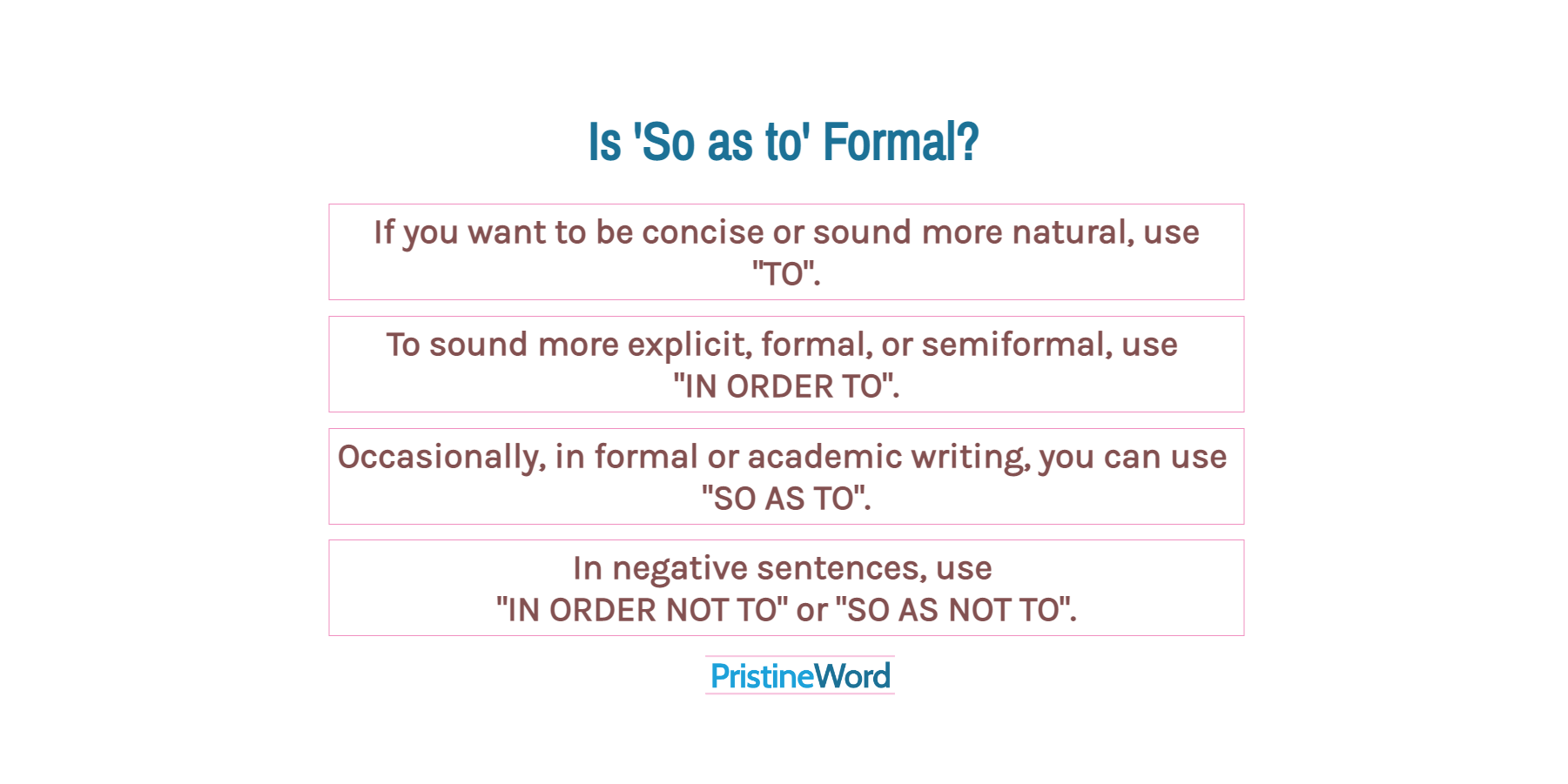We generally use "so as to" in very formal language or academic writing.
"So as to" is a linking word that helps us express purpose. We generally use "so as to" in very formal language or academic writing.
State your opinions with conviction so as to express your ideas clearly and effectively.
Don't use this linking word in colloquial language. In everyday English, we normally use "to" instead.
I went to the park to play with my friends.
I went to the park so as to play with my friends.
"In order to" and "so as to" are very similar and usually interchangeable. "So as to", however, is less common and slightly more formal.
In order to improve the present strained relations between the two countries, we need to address the main issue.
So as to improve the present strained relations between the two countries, we need to address the main issue.
Note that you can use "so as to" at the beginning of your sentence. When using this construction, add a comma after the introductory phrase.
So as to reduce debt, you need to be able to pay well over the minimum.
Be also aware that the negative of "so as to" is "so as not to".
So as not to worsen the situation, you should use this method.
To sound more natural or just be concise, use "to". In more formal situations or to be more explicit, you can use "in order to". Sporadically, in formal or academic writing, you can use "so as to". In negative sentences, use "in order not to" or, in very formal language, "so as not to".
What part of speech is "so as to"? "So as to" is a compound preposition that has an infinitive as its object. As a result, it cannot be followed by a gerund or a noun.
So as to increase your metabolism, you should engage in high-intensity exercise.
So as to increasing your metabolism, you should engage in high-intensity exercise.

